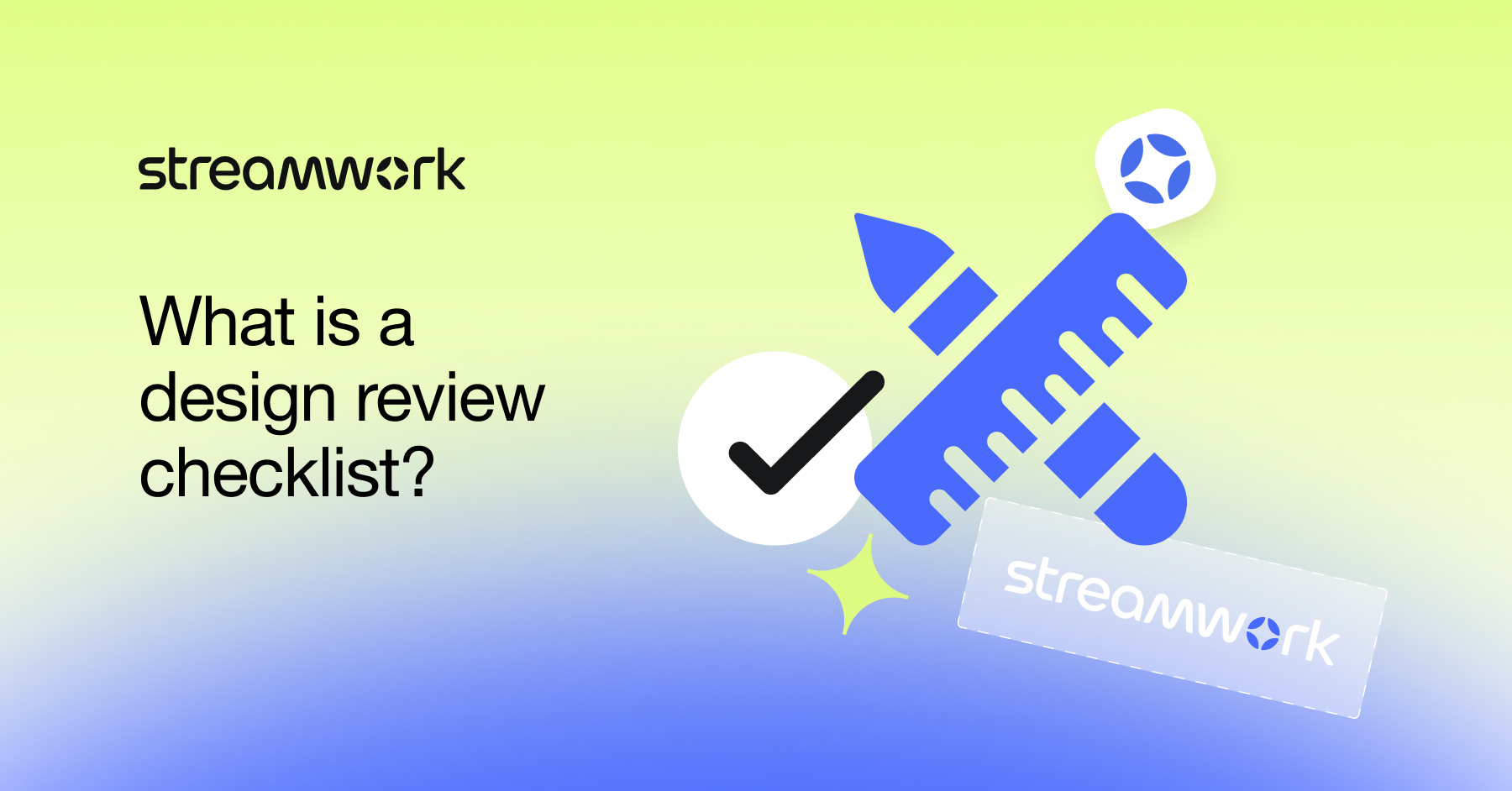Typical participants in a design review
The design review process is inherently collaborative, bringing together a diverse mix of contributors — designers, project managers, brand leads, legal teams and high-level team leads. For agencies, a client is also typically included in reviews. Each plays a distinct role: designers focus on visual and aesthetic quality, managers track timelines and goals, legal ensures regulatory compliance, and team leads and clients confirm the work aligns with their vision. Today’s creative teams also gain valuable insights by including copywriters and strategists, making sure every element — from visuals to messaging — is thoughtfully reviewed. This well-rounded input helps ensure nothing gets overlooked.
Stages of a design review
A thorough design review typically flows through three defined stages: internal peer review, stakeholder review and final review. Each stage serves a specific purpose in shaping the creative. Internal reviews are all about refining the concept and catching early issues within the creative team. Stakeholder reviews bring in feedback from other departments — like marketing, product or legal — to ensure alignment with broader business needs and compliance standards. Finally, a final review by a client or executive provides high-level input and sign-off before launch. A design review checklist can be especially helpful throughout, keeping feedback focused and ensuring all key elements — like brand alignment, technical specs, and legal requirements — are consistently addressed in each review.
Importance of collecting and tracking feedback
At the heart of any successful creative approval process is a clear, organized approach to gathering and tracking stakeholder feedback. Instead of digging through scattered emails or buried chats, a structured review system ensures every comment is seen and addressed. Capturing feedback at each stage helps teams deliver work that meets expectations while keeping a record of decisions for future reference. This reduces confusion, cuts down on revision cycles and keeps everyone on the same page.
The role of tools and platforms like StreamWork
Digital platforms such as StreamWork have transformed the way teams manage the design review process. By centralizing feedback, approvals and revisions in one easy-to-use workspace, StreamWork keeps everything organized and accessible. Teams can set up multi-stage approval routes, trigger automated notifications and maintain a clear audit trail — making reviews more efficient and transparent. With the power of digital tools, marketing teams and agencies drive faster project delivery while boosting creative quality.
What is a design review checklist?
A design review checklist is a practical tool that helps creative teams evaluate their work against key standards before moving to the next stage of approval. It outlines the essential criteria — such as brand alignment, messaging accuracy, visual consistency and technical requirements — that need to be reviewed for each asset. By using a checklist, teams can ensure nothing slips through the cracks and that every piece of creative meets expectations. It brings structure to the review process and keeps everyone aligned on what needs to be checked and why. Whether you’re reviewing a social ad, website mockup or video, a checklist helps guide a more focused and efficient evaluation.
Design review checklists are especially helpful in multi-stage workflows, where different stakeholders review assets at different points. They keep feedback consistent and help avoid repeated or conflicting comments across rounds. These checklists can also be customized for specific clients, channels or project types, making them a flexible tool for creative teams of all sizes. When integrated into platforms like StreamWork, they become even more powerful — automating the process and making it easy to track what’s been reviewed and approved. Ultimately, they help teams deliver better creative with fewer delays and less guesswork.

